Related Research Articles
The General Conference on Weights and Measures is the supreme authority of the International Bureau of Weights and Measures (BIPM), the intergovernmental organization established in 1875 under the terms of the Metre Convention through which member states act together on matters related to measurement science and measurement standards. The CGPM is made up of delegates of the governments of the member states and observers from the Associates of the CGPM. It elects the International Committee for Weights and Measures as the supervisory board of the BIPM to direct and supervise it.

The kilogram is the base unit of mass in the International System of Units (SI), having the unit symbol kg. 'Kilogram' means 'one thousand grams' and is colloquially abbreviated to kilo.
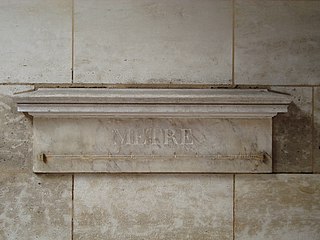
The metre is the base unit of length in the International System of Units (SI). Since 2019, the metre has been defined as the length of the path travelled by light in vacuum during a time interval of 1/299792458 of a second, where the second is defined by a hyperfine transition frequency of caesium.

Metrication or metrification is the act or process of converting to the metric system of measurement. All over the world, countries have transitioned from local and traditional units of measurement to the metric system. This process began in France during the 1790s, and has persistently advanced over two centuries, accumulating into 95% of the world officially only using the modern metric system. Nonetheless, this also highlights that certain countries and sectors are either still transitioning or have chosen not to fully adopt the metric system.
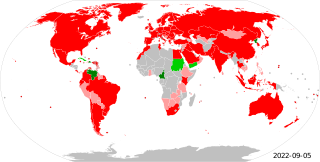
The Metre Convention, also known as the Treaty of the Metre, is an international treaty that was signed in Paris on 20 May 1875 by representatives of 17 nations: Argentina, Austria-Hungary, Belgium, Brazil, Denmark, France, Germany, Italy, Peru, Portugal, Russia, Spain, Sweden and Norway, Switzerland, Ottoman Empire, United States of America, and Venezuela.

The pound or pound-mass is a unit of mass used in both the British imperial and United States customary systems of measurement. Various definitions have been used; the most common today is the international avoirdupois pound, which is legally defined as exactly 0.45359237 kilograms, and which is divided into 16 avoirdupois ounces. The international standard symbol for the avoirdupois pound is lb; an alternative symbol is lbm, #, and ℔ or ″̶.

The International System of Units, internationally known by the abbreviation SI, is the modern form of the metric system and the world's most widely used system of measurement. It is the only system of measurement with official status in nearly every country in the world, employed in science, technology, industry, and everyday commerce. The SI system is coordinated by the International Bureau of Weights and Measures which is abbreviated BIPM from French: Bureau international des poids et mesures.

The SI base units are the standard units of measurement defined by the International System of Units (SI) for the seven base quantities of what is now known as the International System of Quantities: they are notably a basic set from which all other SI units can be derived. The units and their physical quantities are the second for time, the metre for length or distance, the kilogram for mass, the ampere for electric current, the kelvin for thermodynamic temperature, the mole for amount of substance, and the candela for luminous intensity. The SI base units are a fundamental part of modern metrology, and thus part of the foundation of modern science and technology.
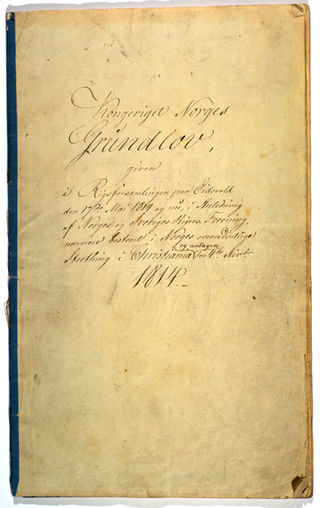
The Constitution of Norway was adopted on 16 May and signed on 17 May 1814 by the Norwegian Constituent Assembly at Eidsvoll. The latter date is the National Day of Norway; it marks the establishment of the constitution.
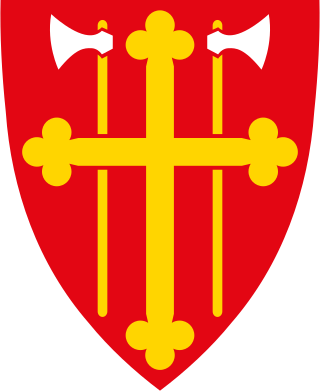
The Church of Norway is an evangelical Lutheran denomination of Protestant Christianity and by far the largest Christian church in Norway. The church became the state church of Norway around 1020, and was established as a separate church intimately integrated with the state as a result of the Lutheran reformation in Denmark–Norway which broke ties with the Holy See in 1536–1537; the King of Norway was the church's head from 1537 to 2012. Historically the church was one of the main instruments of royal power and official authority, and an important part of the state administration; local government was based on the church's parishes with significant official responsibility held by the parish priest.
Same-sex marriage has been legal in Denmark since 15 June 2012. A bill for the legalization of same-sex marriages was introduced by the Thorning-Schmidt I Cabinet, and approved by the Folketing on 7 June 2012. It received royal assent by Queen Margrethe II on 12 June and took effect three days later. Polling indicates that a significant majority of Danes support the legal recognition of same-sex marriage. Denmark was the fourth Nordic country, after Norway, Sweden and Iceland, the eighth in Europe and the eleventh in the world to legalize same-sex marriage. It was the first country in the world to enact registered partnerships, which provided same-sex couples with almost all of the rights and benefits of marriage, in 1989.
The following systems arose from earlier systems, and in many cases utilise parts of much older systems. For the most part they were used to varying degrees in the Middle Ages and surrounding time periods. Some of these systems found their way into later systems, such as the Imperial system and even SI.
The units of measurement in use in Denmark are currently part of the metric system. A variety of other historical weights and measures have been employed throughout the nation's history.
As in the case of the Danes, the Norwegians' earliest standards of measure can be derived from their ship burials. The 60-Norwegian-feet-long Kvalsund ship was built ca. 700 AD and differs from the Danish boats less than it does from the Oseberg, Gokstad and Tune ships which all date from ca. 800 AD. Thwarts are typically spaced about 3 Norwegian feet apart.

A Scandinavian mile is a unit of length common in Norway and Sweden, to a lesser extent in Finland, but not Denmark. Today, it is standardised as 1 mil being 10 kilometres, but it had different values in the past.
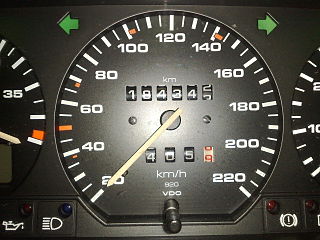
The kilometre per hour is a unit of speed, expressing the number of kilometres travelled in one hour.

The hectare is a non-SI metric unit of area equal to a square with 100-metre sides (1 hm2), that is, 10,000 square metres, and is primarily used in the measurement of land. There are 100 hectares in one square kilometre. An acre is about 0.405 hectares and one hectare contains about 2.47 acres.
Sweden decided to adopt the metric system in 1876. After a ten-year transition period starting 1879, the use of legacy units was outlawed by the beginning of 1889.
The international yard and pound are two units of measurement that were the subject of an agreement among representatives of six nations signed on 1 July 1959: Australia, Canada, New Zealand, South Africa, the United Kingdom and the United States. The agreement defined the yard as exactly 0.9144 meters and the avoirdupois pound as exactly 0.45359237 kilograms.

The following outline is provided as an overview of and topical guide to the metric system:
References
- ↑ Regjeringen (2004). "Ny lov om måling (Internasjonale avtaler)" [New law regarding measurements](PDF) (in Norwegian). p. 28, Punkt 4.3.1.
- ↑ Statsråd, Justervesenet (22 May 1875). "Lov om metrisk Maal og Vægt" [Law Regarding Metric Measures and Weights]. Archived from the original on 13 August 2011.
- ↑ Regjeringen (2004). "Ny lov om måling" [New Law Regarding Measurements](PDF). Internasjonale avtaler (in Norwegian).
- 1 2 Statsråd, Justervesenet (22 May 1875). "Lov om metrisk Maal og Vægt" (in Norwegian). Archived from the original on 13 August 2011.
- 1 2 3 4 5 Halbo, Leif (21 July 2005). "Mål, vekt og norsk selvstendighet" [Measures, Weights and Norwegian Independence]. Aftenposten, morgen, Kronikk (in Norwegian). Archived from the original on 2 September 2011. Retrieved 2012-07-31.
- ↑ Morgenbladet 10. mai 1860.
- ↑ J. A. Seip: «Ole Jacob Broch og hans samtid», Gyldendal 1971